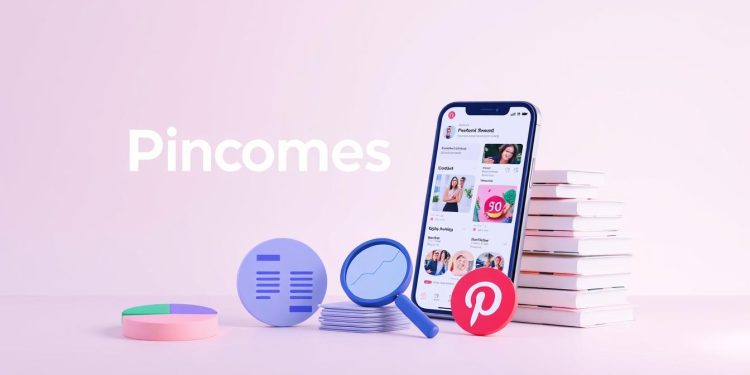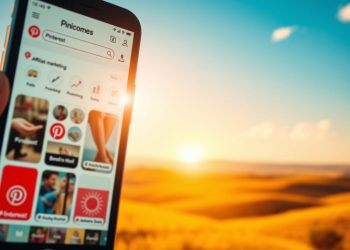To craft a winning Pinterest marketing strategy, start by digging into your audience analytics to shape content around their interests. Optimize your profile and boards with striking visuals, keyword-rich descriptions, and cohesive covers for a standout look. Create high-quality, vertical Pins with bold text and clear calls to action to boost saves and clicks. Use analytics to spot trending topics and adapt fast. Integrate Pinterest with your wider marketing for greater impact—there’s much more you can reveal next.
Key Takeaways
- Analyze your Pinterest audience’s demographics and interests using Pinterest Analytics to tailor content that resonates and drives engagement.
- Optimize your profile and boards with keyword-rich titles, descriptions, and visually cohesive covers for better visibility and brand consistency.
- Create high-quality, vertical Pins with bold text overlays and clear calls-to-action for increased saves and conversions.
- Monitor Pinterest Analytics to track pin performance, identify trends, and refine your content strategy for continuous growth.
- Integrate Pinterest with your overall marketing plan, ensuring brand alignment and cross-promoting content across multiple platforms for greater reach.
Understanding Your Pinterest Audience

How well do you really know who’s scrolling through your pins? Explore Pinterest Analytics and visualize the data: age, gender, location, and even devices used.
Pinpoint your audience demographics to discover who truly engages with your visuals. Don’t just stop there—analyze audience interests. Are they into home décor, fitness, or DIY crafts?
Dig into demographics and interests to reveal who’s engaging with your pins and what passions keep them coming back for more
The insights panel breaks it all down, showing top categories and trending topics among your followers. Use this data to tailor your content—create pins that match the style, colors, and themes your audience loves.
Adjust your posting schedule to when your primary demographics are most active. By aligning your strategy with real-time data on who they’re and what they crave, you’ll drive more saves, clicks, and conversions.
Optimizing Your Profile and Boards
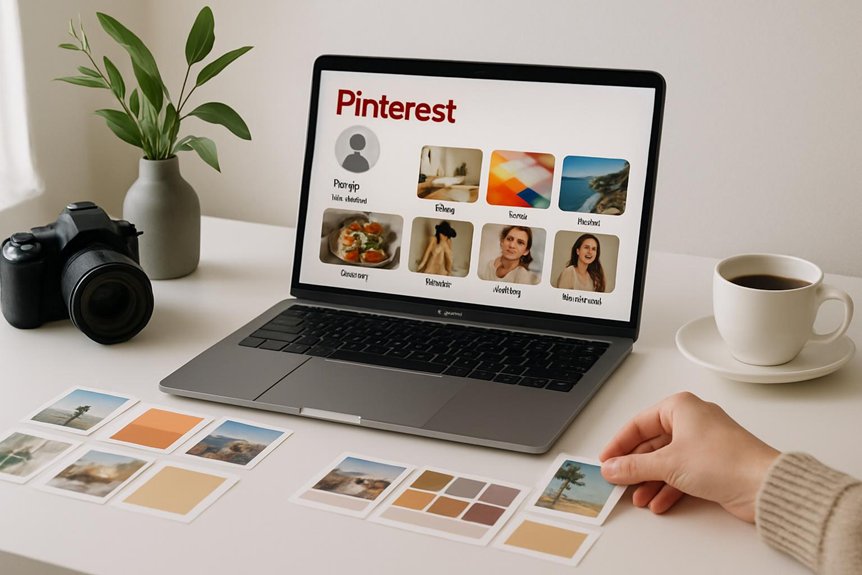
Now that you understand who’s engaging with your pins, it’s time to make sure your Pinterest profile and boards instantly capture their attention.
Start by refining your profile aesthetics—use a high-resolution logo, a keyword-rich bio, and a consistent brand color palette. According to Pinterest, profiles with clear visuals and descriptive bios see up to 30% more engagement.
Next, focus on board organization. Create specific, themed boards with keyword-optimized titles and descriptions to boost discoverability. Arrange your boards so your best content appears first, guiding visitors to your top-performing pins.
Keep your board covers visually aligned for a cohesive look. Regularly audit your boards, archive outdated content, and update covers to maintain a fresh, engaging profile that attracts your target audience.
Creating Engaging Pins That Convert

Three visual elements set high-performing pins apart: eye-catching imagery, bold text overlays, and a clear call-to-action.
To drive conversions, start with high quality images—they get saved 67% more often than lower-quality visuals. Next, use bold, readable text overlays to highlight the value or benefit your pin delivers. This technique supports visual storytelling, making your message instantly clear as users scroll.
High quality images and bold text overlays grab attention and make your message clear, driving more saves and conversions.
Don’t forget a persuasive call-to-action, like “Shop Now” or “Learn More,” to guide users toward your goal. Stick to vertical formats (2:3 ratio) for maximum visibility. Consistency in color palette and style also boosts brand recognition.
Test pin designs frequently to see which visuals actually convert, and remember: every pin should tell a quick, compelling story in a single glance.
Leveraging Pinterest Analytics for Growth
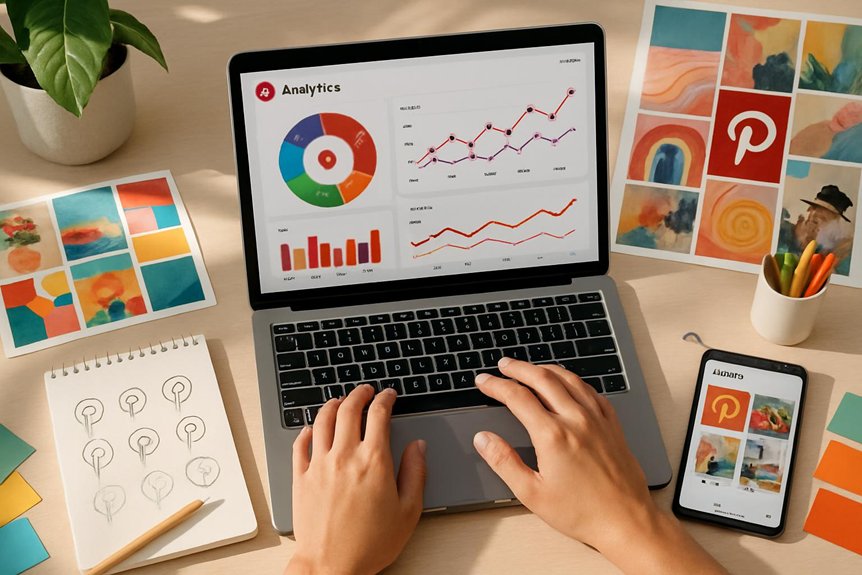
Once you’ve designed pins that capture attention and inspire action, it’s time to measure what’s working. Immerse yourself in Pinterest Analytics Tools to track metrics like impressions, saves, link clicks, and audience demographics.
Visualize which pins perform best and identify patterns—are certain colors or formats drawing more engagement? Use these insights to refine your creative direction.
Leverage Pinterest Trends to spot emerging topics and keywords your audience is searching for right now. Align your content calendar with trending ideas to maximize visibility and drive growth.
Regularly compare your pin performance against past data to see what’s moving the needle. By consistently analyzing and iterating, you’ll create a data-driven feedback loop that fuels smarter Pinterest marketing decisions and accelerates your brand’s growth.
Integrating Pinterest With Your Overall Marketing Plan
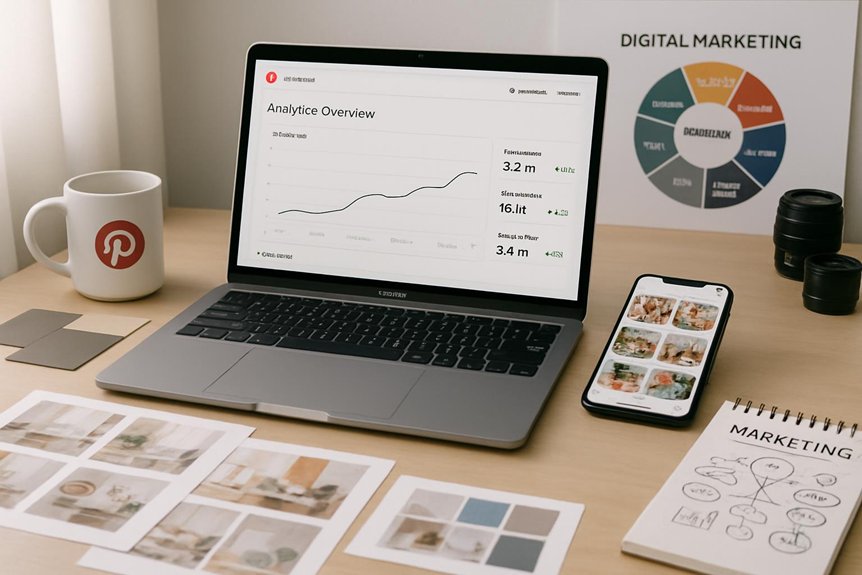
While Pinterest excels as a visual discovery platform, its true power emerges when you weave it seamlessly into your broader marketing strategy.
Start by aligning your Pinterest campaigns with your brand’s voice and objectives for cross platform synergy. Use a unified content calendar to schedule Pins alongside posts for Instagram, Facebook, and your blog, ensuring cohesive messaging and visuals.
Analyze data from each platform to identify what content performs best, then optimize your Pins for high-performing topics or products. Integrate Pinterest links in your emails and website, driving targeted traffic back to your most engaging boards.
Collaborate across your marketing team so that all channels amplify each other, maximizing reach.
Ultimately, a strategic, visually consistent approach keeps your brand top-of-mind wherever your audience discovers you.
Frequently Asked Questions
How Often Should I Post on Pinterest for Maximum Visibility?
You’re wondering about posting frequency for maximum visibility. Aim to post fresh, visually engaging Pins at least once per day, but ideally 5–10 times daily for the best reach.
Schedule them at ideal times—typically evenings and weekends, when users are most active. Use analytics to track which images and times drive the most engagement.
What Are the Best Third-Party Scheduling Tools for Pinterest?
When you’re aiming for tailored scheduling and boosted user engagement, top tools like Tailwind, Later, and Buffer stand out.
Tailwind provides visual drag-and-drop calendars and data-driven insights, helping you slot pins when your audience is most active.
Later’s media library lets you preview your feed, ensuring visual consistency.
Buffer supports actionable tactics with analytics that show what works.
These platforms streamline your workflow and maximize content exposure with strategic pin placements.
Can Pinterest Marketing Work for Service-Based Businesses?
Absolutely, you can leverage Pinterest for service-based businesses by focusing on service promotion through visual storytelling.
Use eye-catching infographics, before-and-after images, and client testimonials to showcase your expertise. Data shows that 83% of weekly Pinners make purchases based on content they see, so keep your visuals consistent and actionable.
Create boards for each service, optimize descriptions with keywords, and drive traffic to your website with strong calls-to-action on every pin.
How Do Promoted Pins Differ From Organic Pins?
When you use Promoted Pins, you pay to boost your content’s visibility, targeting specific audiences and increasing your organic reach with data-driven targeting.
Unlike organic pins, which rely on Pinterest’s algorithm for exposure, Promoted Pins appear in more feeds and search results, letting you test visuals and refine tactics.
Analyze performance metrics—like impressions and engagement—to optimize imagery and copy, so your pins stand out and drive action beyond what organic reach alone achieves.
What Copyright Issues Should I Consider When Using Images on Pinterest?
When sourcing images, always check licensing to avoid copyright infringement. Don’t just grab visuals from Google—use royalty-free sites or obtain permission.
According to recent studies, over 85% of copyright claims on social platforms involve improper image sourcing. Always credit photographers when required, and keep records of usage rights.
To protect your brand, create original graphics or use platforms that guarantee legal image use. Prioritize compliance to maintain a trustworthy, visually compelling presence.
Conclusion
You’ve learned how to turn Pinterest into a powerful, data-driven marketing engine. By knowing your audience, designing eye-catching boards, and creating scroll-stopping pins, you’ll drive traffic and conversions. Immerse yourself in Pinterest Analytics—let the numbers guide your next moves. Integrate every tactic with your broader marketing strategy for maximum impact. Don’t just pin—strategize, measure, and optimize. Your next viral moment could be just one well-designed, well-timed pin away. Start creating and tracking results today!

